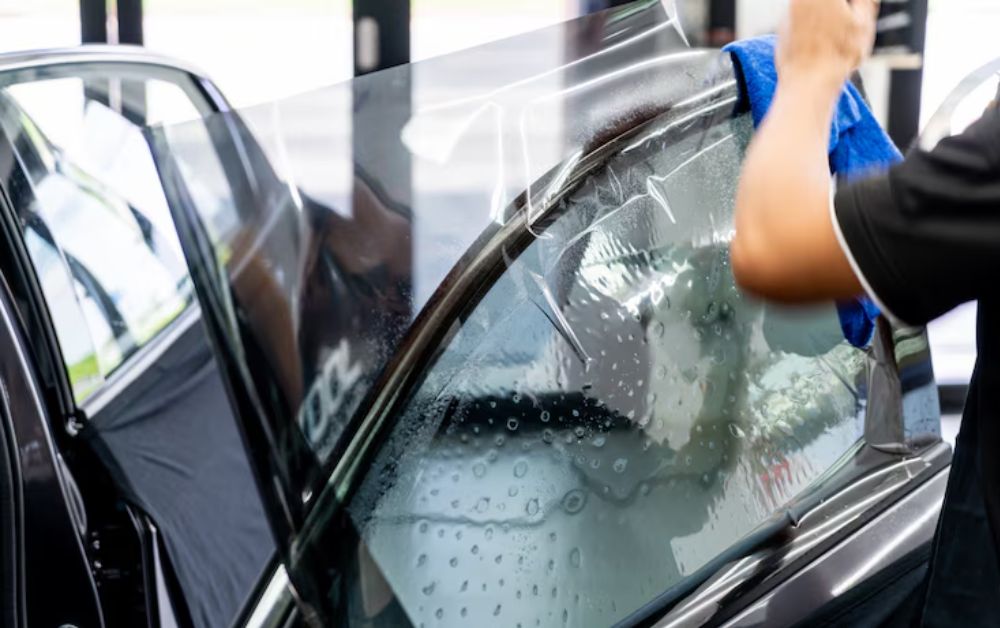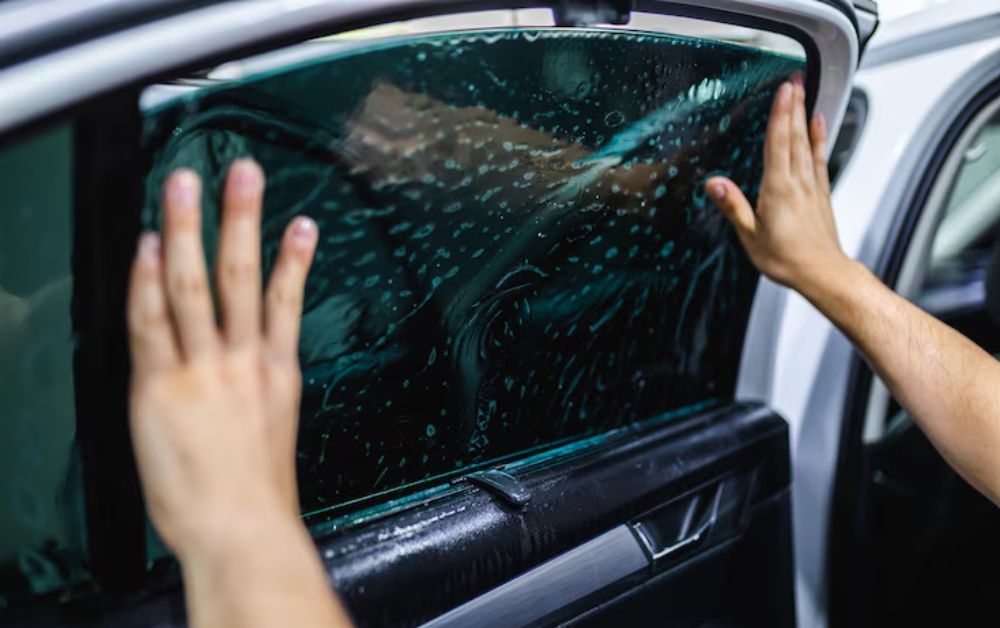Tinted windows provide privacy, reduce glare, prevent harmful UV rays, and lend your car or home a sophisticated appearance. But they need special treatment when cleaning. Tinted windows are not like ordinary glass; they have a thin film that is readily scratched or damaged by improper cleaning techniques or strong chemicals. Whether you’re dealing with auto glass or home glass, it’s good to understand how to clean tinted windows properly without damaging the film so you can make them appear better and extend their lifespan.

Understanding Window Tinting
Before getting into cleaning, it is good to understand what tinting is. Window tint is usually a polyester film applied to the inner side of glass surfaces. The film can either be dyed, metalized, or ceramic, and while durable, it is also susceptible to damage from abrasive materials and ammonia-based cleaners.
Tinted films are most vulnerable in the initial days after installation. During the curing process, which may last from a few days to several weeks, the film still bonds and settles onto the glass. During this period, avoid any form of cleaning. Once fully cured, you may employ safe cleaning practices to maintain their effectiveness and clarity.
Materials You Should Avoid
The most frequent mistake most people make is using the wrong cleaning products. Here are some things you should never use on tinted windows:
- Ammonia-based cleaners: These will dry out and embrittle the tint film with time, causing bubbles or a color change.
- Abrasive or rough cloths: Paper towels, brushes, or dirty rags can scratch the film.
- Blades or scrapers: Don’t use razor blades to scrape away dirt or debris, as they will cut or peel the film.
What You Need for Safe Cleaning
Clean tinted windows safely with only mild and tint-safe materials. Here’s what you need:
- Soft microfiber cloths (clean and lint-free)
- Distilled water (to avoid mineral deposits)
- Mild dish soap or baby shampoo (ammonia-free and without harsh chemicals)
- Spray bottle to put the cleaning solution on
- Rubber squeegee (optional, but handy for streak-free drying)
Step-by-Step Guide: How to Safely Clean Tinted Windows Without Damaging the Film
Step 1: Choose the Right Time and Place
Clean the windows in the shade, preferably indoors or during a more fabulous day. Direct sunlight will cause the cleaning solution to dry too quickly and leave streaks, making the job harder.
Step 2: Prepare the Cleaning Solution
Por a spray bottle with distilled water and add a few drops of baby shampoo or mild dish soap. Shake gently to mix. Avoid using more soap than necessary; a few drops are enough.
Step 3: Dust Off the Surface
Before spraying any liquid, wipe the loose dust and dirt using a dry microfiber cloth. This will keep abrasive particles from scratching the tint when wiping with the solution.
Step 4: Spray and Wipe
Spray the cleaning solution on the window — mist the surface lightly rather than soaking it. Wipe gently in straight, horizontal strokes with a clean microfiber cloth. Avoid circular rubbing, as this tends to trap dirt and cause micro-scratches.
Step 5: Dry the Window
Use a second dry microfiber cloth or a rubber squeegee to wipe off excess water. Start at the top and work your way down. This will eliminate streaks and water spots.
Step 6: Check the Edges
Pay extra attention to the edges of the film where water can accumulate. Be gentle and don’t push too hard near the corners, where the film is most apt to peel off.
Additional Tips for Long-Term Care
- Clean regularly: Gentle cleaning daily is better than letting dirt and grime build up.
- Avoid automatic car washes: Rotating brushes and high-pressure sprays in certain car washes can damage window film.
- Use a protective sunshade: In automobiles, sunshade blocks UV damage and heat buildup, extending your tint’s longevity.
- Avoid sticking decals or suction cups to tinted windows — removing them will damage the film.
When to Call a Pro
If your tinted windows are filthy or you believe there is damage to the film (like bubbling, peeling, or deep scratches), you may call a professional window cleaner or a tint installer. Attempting to clean or fix major issues on your own may result in costly damage or the need for reinstallation.
Common Errors to Avoid
- Applying hardware store window cleaners without reading labels: Many products contain ammonia or alcohol.
- Cleaning too much: It’s nice to clean regularly, but not every day is necessary, and it will degrade the film more quickly.
- Using colored towels: These can bleed color when wet, particularly with hot water.

Conclusion
It’s not hard to clean tinted windows, but it does take a gentle and knowledgeable touch. With the right tools and methods, you can keep your windows clean and extend the life of your tint. Put in no ammonia, scrub, mild soap, and a soft cloth. Understanding how to safely clean tinted windows without damaging the film for your house or car will preserve their look, function, and value for years.
